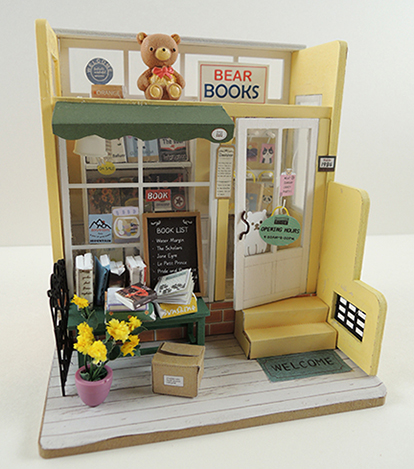 Readers might recall the miniature library kit that almost drove Katie to the edge of sanity in 2021. It took 12 months, 46 hours and countless grey hairs, but Katie finally completed it! Fast forward to 2022, and the discovery of the Mind-Find Bookstore kit by Rolife Hands Craft. How can we resist, right? This bookstore has a BEAR in it! So we decided to test the kit…except…now it’s MY turn to feel the agony and ecstacy of miniature building.
Readers might recall the miniature library kit that almost drove Katie to the edge of sanity in 2021. It took 12 months, 46 hours and countless grey hairs, but Katie finally completed it! Fast forward to 2022, and the discovery of the Mind-Find Bookstore kit by Rolife Hands Craft. How can we resist, right? This bookstore has a BEAR in it! So we decided to test the kit…except…now it’s MY turn to feel the agony and ecstacy of miniature building.
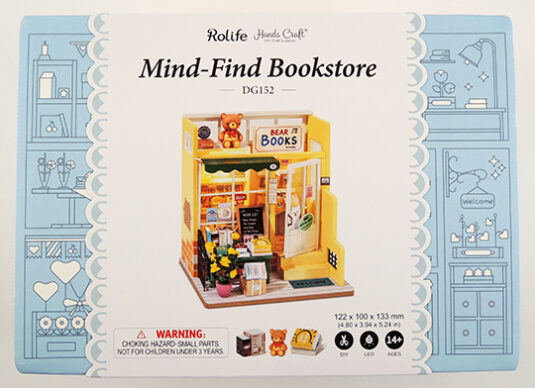
The Rolife kit is nicely packaged, and retails for around $20 on Amazon and Target. It is intended for ages 14 and up. That age range is absolutely correct. You need a steady hand and lots of patience to build it. I slowly unpackaged everything, wondering what I had gotten myself into. In the background, Katie chuckled evily.
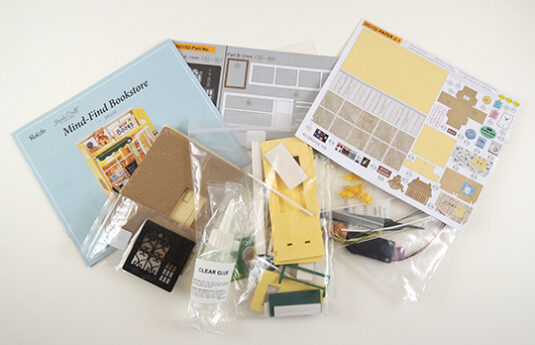
One thing I liked about the kit was that you could lay the pieces on the paper templates, matching up the numbers with the instructions. This allowed me to have everything in one place, without having to stop and hunt for pieces during the process. Fair warning: the print on the instructions is miniscule, and there’s a bunch of tiny little paper signs to cut out too. I used regular-sized scissors and fumbled through, but smaller craft scissors would have produced cleaner cuts for sure.

One thing I did NOT like about the kit was the glue. The nozzle was always gushing, which endangered the fragile pieces. I finally resorted to using a paperclip to brush the glue on all the teeny weeny surfaces.
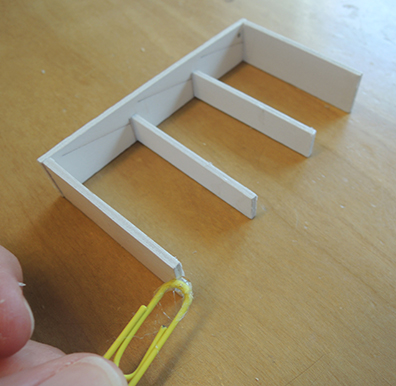
The kit also comes with a pair of plastic tweezers. I definitely had to use them! Not just for construction, but also setting up the interior of the shop. It was quite the adventure, folding the little bags, gluing the little handles on, and then navigating each of them on to the little slippery pegs!
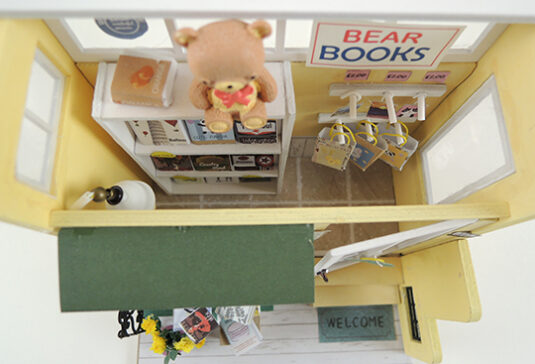
There were a couple different types of books to construct as well. Some were just paper covers glued to foam pieces. Others were books you could actually open and turn the pages. Nice!
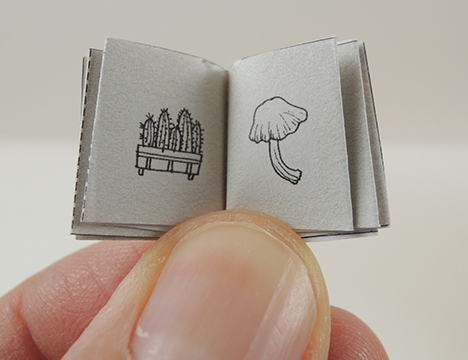 The advertised completion time for the kit is 3.5 hours. Well, it took me 5 hours and lots of complaining, squinting, moaning, and muttering quiet curses. At one point, I sent Katie a photo of my messy progress and bemoaned how crazy the kit was making me. She simply sent back this:
The advertised completion time for the kit is 3.5 hours. Well, it took me 5 hours and lots of complaining, squinting, moaning, and muttering quiet curses. At one point, I sent Katie a photo of my messy progress and bemoaned how crazy the kit was making me. She simply sent back this:
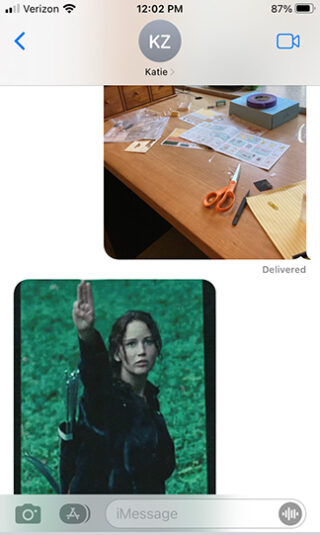
Like the kit Katie assembled, this little bookstore can be wired for lights. Buuuuuut I couldn’t figure out the “heat tube” part of the instructions, annnnnnd the little lightbox broke during construction. So I had to jerry-rig the bulb to the battery like some sort of miniature MacGyver. But in the end, there was LIGHT!
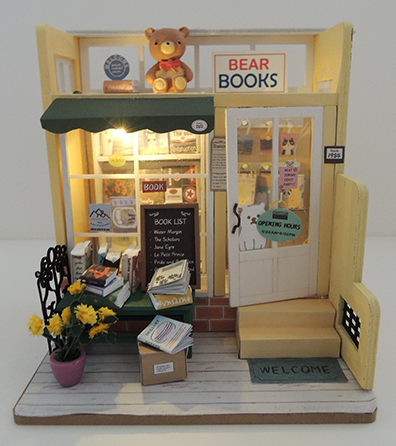 I would say the Mind-Find Bookstore kit by Rolife Hands Craft is mid-range in difficulty. If you are working on this with a kid, plan for lots of extra time and patience as most of the pieces are from scratch, the paper signs are small, and the instructions are a little vague. Ultimately, the results were cute, and this cheerful little bookstore will brighten any room or shelf!
I would say the Mind-Find Bookstore kit by Rolife Hands Craft is mid-range in difficulty. If you are working on this with a kid, plan for lots of extra time and patience as most of the pieces are from scratch, the paper signs are small, and the instructions are a little vague. Ultimately, the results were cute, and this cheerful little bookstore will brighten any room or shelf!

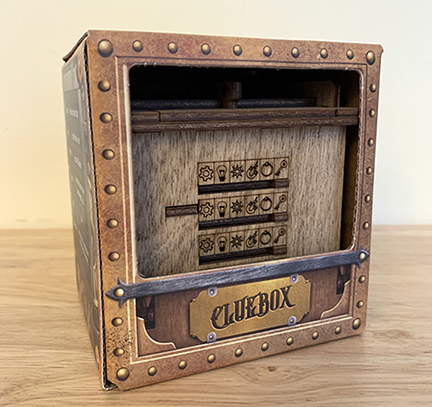 Always searching for more escape room inspiration, Katie was delighted when her mom sent her a dandy little escape challenge that fit right in the palm of her hand. Though it was small, but packed a mighty punch! Take it away, Katie!
Always searching for more escape room inspiration, Katie was delighted when her mom sent her a dandy little escape challenge that fit right in the palm of her hand. Though it was small, but packed a mighty punch! Take it away, Katie!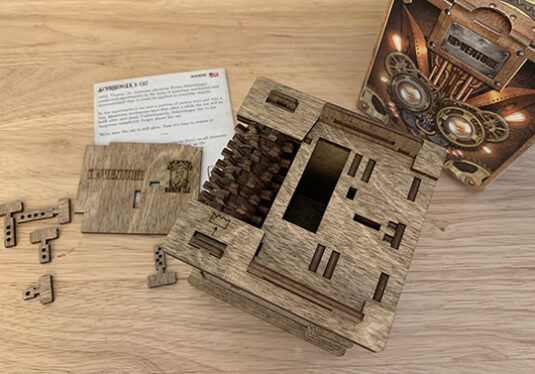
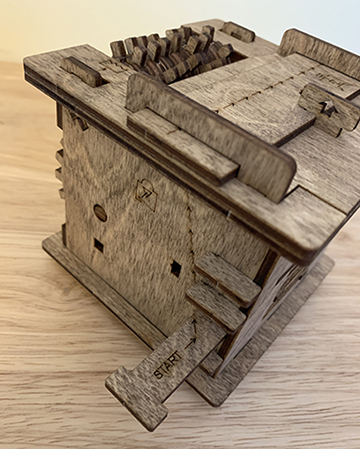
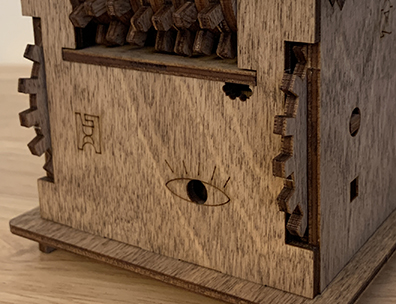
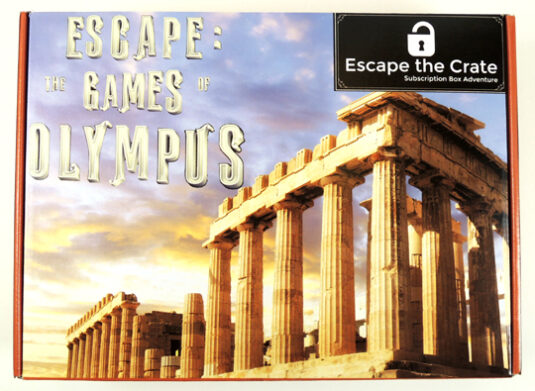 This week, Katie challenged her Greek mythology knowledge with an at-home escape room worthy of Olympus! And given it took six hours to complete, I’m going to applaud her…shall we say…Herculean efforts (ooooo bad joke! baaaaad joke)! OK Katie, take it away!
This week, Katie challenged her Greek mythology knowledge with an at-home escape room worthy of Olympus! And given it took six hours to complete, I’m going to applaud her…shall we say…Herculean efforts (ooooo bad joke! baaaaad joke)! OK Katie, take it away!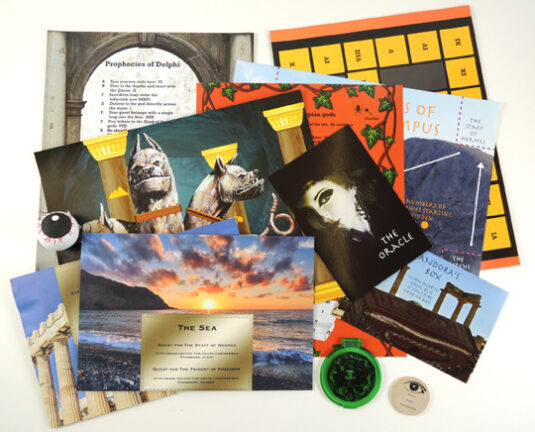 The suggested age for Escape the Crate is 10+ with adult supervision, though younger players will likely enjoy participating along with their grown-ups. Some of the themes are a bit scarier, such as murder mysteries or fighting mythological characters (as I would soon discover in The Games of Olympus), but Escape the Crate does a fantastic job alerting players to when there are darker moments. Some of the crates have very intense themes – like encountering the infamous Jack the Ripper – so those boxes actually have two games inside: one for adults and a version that is more family friendly.
The suggested age for Escape the Crate is 10+ with adult supervision, though younger players will likely enjoy participating along with their grown-ups. Some of the themes are a bit scarier, such as murder mysteries or fighting mythological characters (as I would soon discover in The Games of Olympus), but Escape the Crate does a fantastic job alerting players to when there are darker moments. Some of the crates have very intense themes – like encountering the infamous Jack the Ripper – so those boxes actually have two games inside: one for adults and a version that is more family friendly.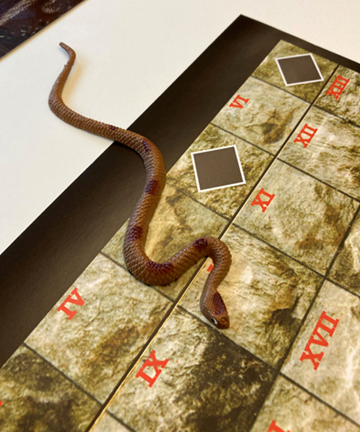 Much like the Finder Seekers kit (which I review
Much like the Finder Seekers kit (which I review 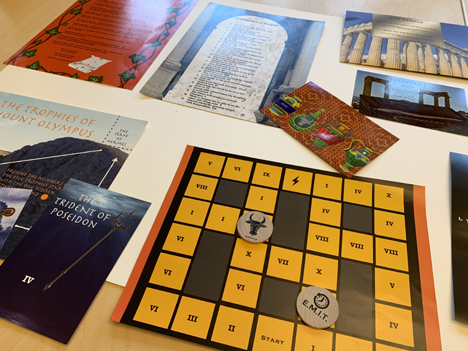
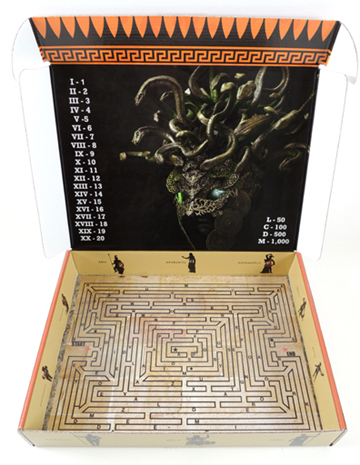 In my opinion, however, Escape the Crate is designed to be played by a group of people and would be an ideal party game. I honestly believe if I had been working with others, we would have gotten through the mystery much faster. Not to say that one person can’t do it entirely on their own, it’s just much more difficult for a single player to finish.
In my opinion, however, Escape the Crate is designed to be played by a group of people and would be an ideal party game. I honestly believe if I had been working with others, we would have gotten through the mystery much faster. Not to say that one person can’t do it entirely on their own, it’s just much more difficult for a single player to finish.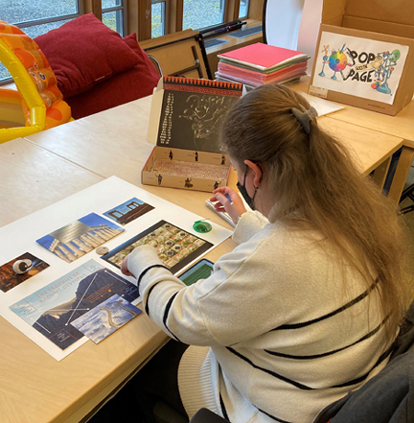 Psst! Is there a game or at-home escape room you’ve heard about and want me to test? Send an email to
Psst! Is there a game or at-home escape room you’ve heard about and want me to test? Send an email to